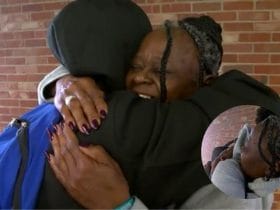According to CNBC, On Wednesday night, Minnesota Governor Tim Walz accepted the Democratic vice presidential nomination at the Democratic National Convention. In his address, Walz underscored the vital role Social Security survivor benefits played in his family’s life.
Walz shared that after the death of his father from lung cancer at the age of 19, his family was burdened with significant medical debt. He credited Social Security benefits with providing his mother, younger brother, and himself with the financial support needed to “live with dignity.” Walz expressed his gratitude by stating, “Thank God for Social Security survivor benefits.”
The Crucial Role of Social Security Benefits for Children
According to recent data from the Social Security Administration (SSA), approximately 3.7 million children are currently receiving Social Security benefits. These benefits are available to unmarried children under 18, those aged 18 to 19 who are full-time students in grades 12 or below, and individuals aged 18 or older who have a disability that began before age 22.
The SSA estimates that 98% of children in the U.S. who lose a working parent are eligible for Social Security benefits, which are based on the deceased parent’s earnings record. As of July, the average monthly benefit for surviving children is $1,103, with over 2 million children receiving these payments.
Despite these provisions, many families remain unaware of their eligibility. Social Security Commissioner Martin O’Malley highlighted at a June National Academy of Social Insurance event that many children across the nation do not claim their survivor benefits.
Data suggests that up to 50% of orphaned children in the U.S. might not be receiving the benefits they are entitled to, according to Joyal Mulheron, founder and executive director of Evermore, a nonprofit focused on supporting bereaved families. Mulheron emphasized that accessing these benefits could significantly alleviate child poverty.
The SSA is making efforts to reach eligible families through various measures, including sending information letters, launching a dedicated web page for survivor benefits, and partnering with states and communities. In Utah, for instance, a new checkbox has been added to death reporting forms to identify families with minor children.
Eligibility for Social Security Benefits
Over half of the children receiving Social Security benefits have lost a parent who contributed to the program. Eligible children can receive up to 75% of the deceased parent’s basic benefit. The eligibility criteria do not require that children live with or receive financial support from the deceased parent, nor does it matter if the parents were married.
In certain cases, surviving parents caring for children under 16 may also qualify for benefits. Additionally, children may receive benefits if a living parent is retired or disabled and eligible for Social Security, potentially receiving up to half of the parent’s benefits.
The benefit amount is subject to a family maximum, which limits the total monthly benefits based on the deceased worker’s earnings record. This formula varies depending on whether the benefits are related to disability, retirement, or survivor benefits.
Improving Access to Benefits
Jim Blair, vice president of Premier Social Security Consulting and a former SSA administrator, noted that funeral directors often direct families to Social Security for potential benefits, including a $255 lump sum death benefit. However, some families may not fully access these benefits due to factors such as changes in guardianship, immigration issues, missed deadlines, or administrative errors.
Mulheron suggested that making online applications for children’s benefits more accessible could improve uptake. Blair also encouraged families to reach out to the SSA if they suspect they might be eligible for benefits, emphasizing that it is important to ensure no one misses out on available support.
For assistance, the SSA can be contacted at 1-800-772-1213. Applicants for children’s benefits may need to provide documentation including a child’s birth certificate, proof of adoption, the parent’s and child’s Social Security numbers, and, if applicable, the parent’s death certificate or medical evidence of the child’s disability.











Leave a Reply